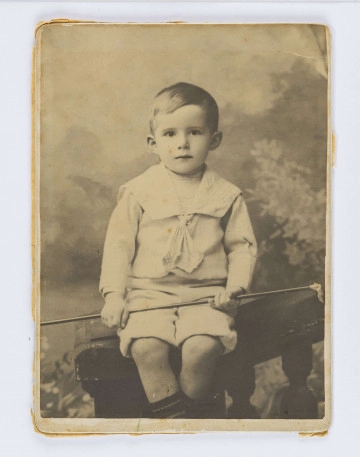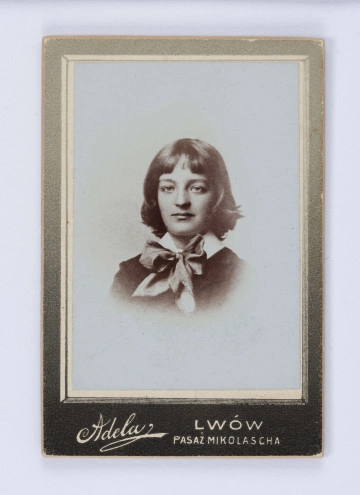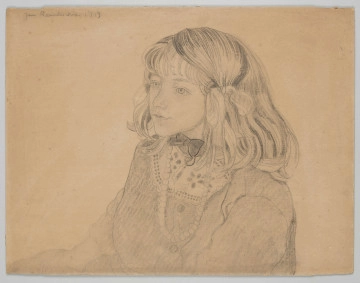
Adam Żeromski, son of Stefan Żeromski and Oktawia Żeromska
1905
National Museum in Lublin
Part of the collection: Portrait
In modern paintings, portraits of children appeared as independent painting subjects. They immortalised young representatives of different states and social groups, from aristocratic families through the nobility to the wealthy bourgeoisie. They were often representative. In such cases, no care was taken for the naturalness of the depiction. Young children were shown frozen in rigid poses, emphasised by expensive and fashionable clothes. The costume of an adult, adjusted only to the size of a toddler, added solemnity and dignity to the child while restricting its freedom of movement. A large proportion of children's portraits is epitaphs. Depictions of the dead were commissioned to preserve their memory. The portrait of a girl, looking four or five years old, painted in vivid colour against a dark background, has an inscription in the upper corner indicating her age at less than two years. Thus, the canvas is a testament to the family's memory of a child who has died. The summer gown and striking bonnet in which the girl is dressed might symbolise her parents' regret that she would never enjoy elegant dress like an adult maiden. The girl holds flowers of different species in both hands. Their meaning is unclear. The cut flowers may symbolise a premature death. They may be an allusion to her name – Rose, Rosalia, Florentine – known only to her closest relatives.
Magdalena Norkowska
Author / creator
Dimensions
cały obiekt: height: 66 cm, width: 84 cm
Object type
painting
Technique
oil technique
Material
canvas, oil-based paint
Creation time / dating
Creation / finding place
Owner
The National Museum in Lublin
Identification number
Location / status

1905
National Museum in Lublin

1900
National Museum in Lublin

1919
National Museum in Lublin
DISCOVER this TOPIC
Castle Museum in Łańcut
DISCOVER this PATH
Educational path